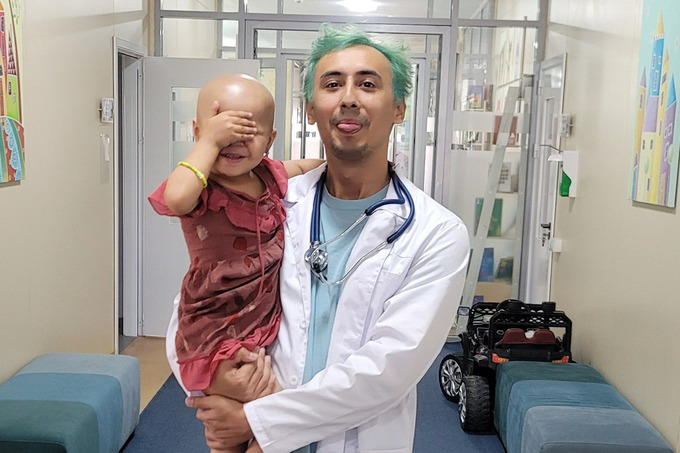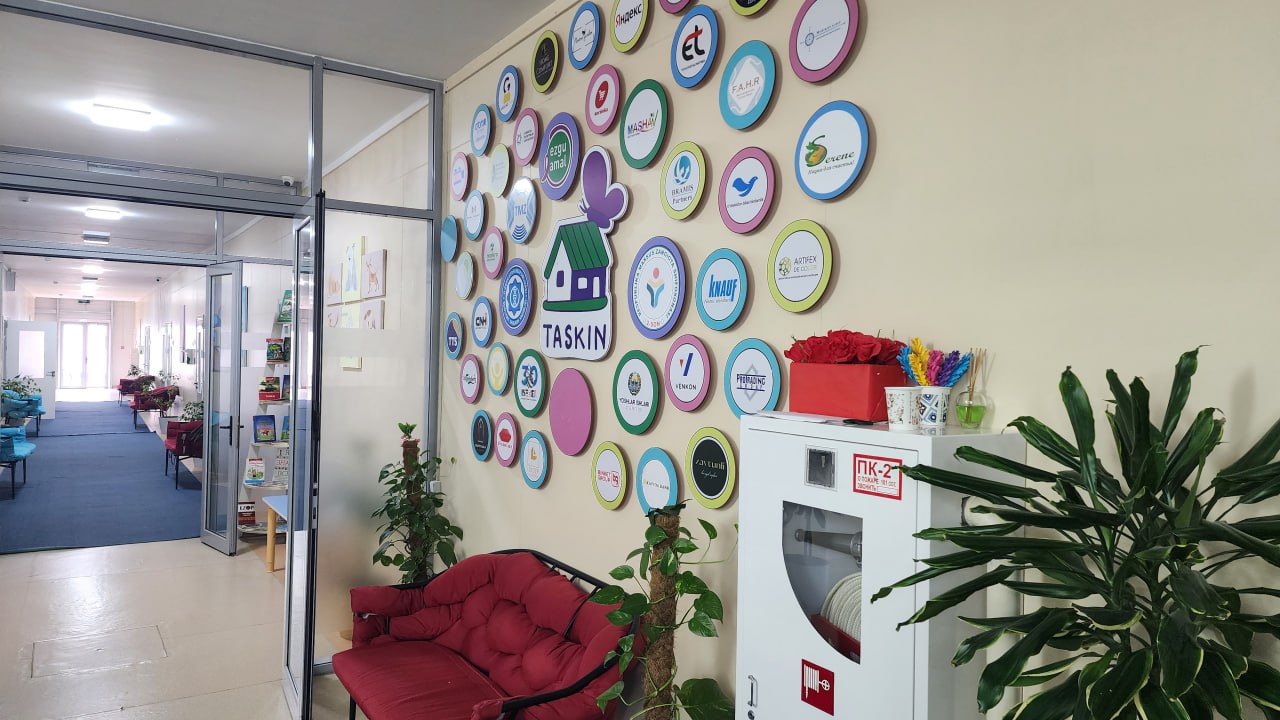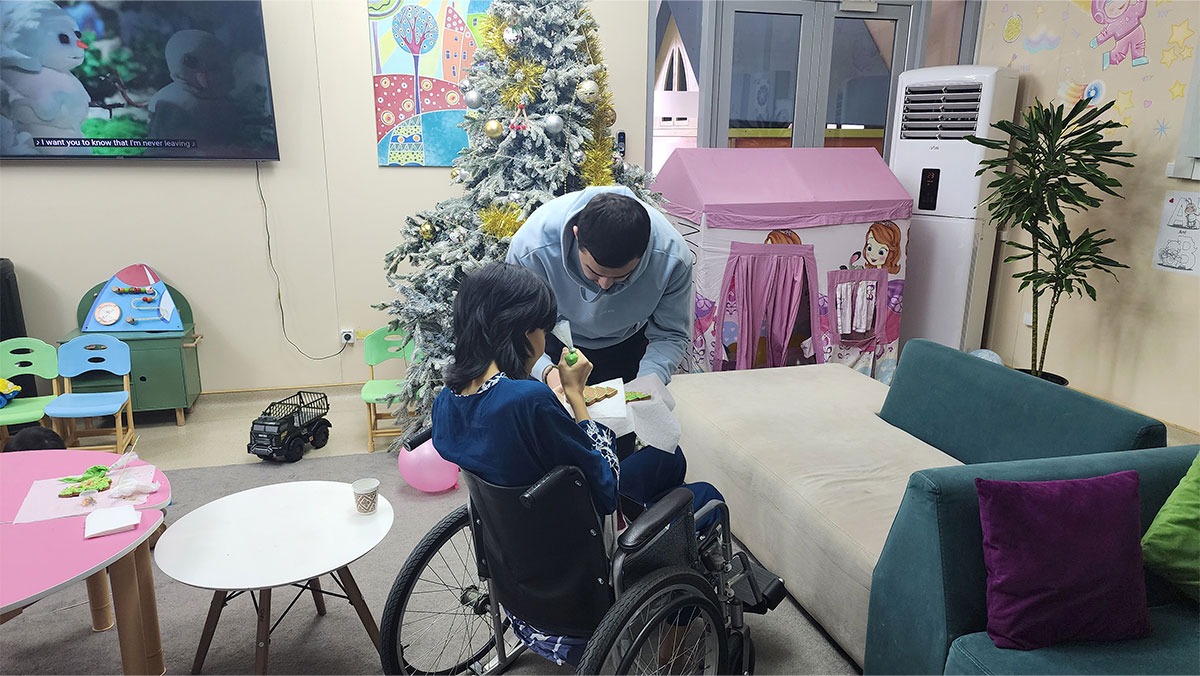
«We can’t cure everyone — desperate situations happen. But we can make sure that the last days of life are as active and fulfilling as before the illness», – said Rustam Narbaev, head of the hospice, oncologist.
Taskin is the least like a hospital. It looks like a modern house or a medical hotel that provides care, meals and hugs. Each room has two beds, one of them functional medical; refrigerator, TV, table and chairs, wardrobe, private bathroom. The hospice has a shared playroom, a library, rooms for a psychologist and a social worker.





Oncologist Yahye Ziyaev spoke about the need to develop palliative care and hospices in Uzbekistan since 2008.
Oncologists who advocated the development of palliative care in the country were heard in 2016. In April 2017, the presidential decree “On measures for the further development of the oncological service and improvement of oncological care for the population of the Republic of Uzbekistan for 2017-2021” was issued. In it, the creation of a modern system of rehabilitation and palliative care, as well as hospices, was identified as one of the priorities for the further development of the oncological service.
The first hospice, which was built by the city khokimiyat, was scheduled to open in 2019. It didn’t work out. In 2020, the COVID-19 pandemic hit the world. The oncologists donned protective antiviral suits and moved to Zangiata-2 to live and save lives. Narbaev treated patients and was in charge of department 6B, Ziyaev worked as the chief statistician.
Last year, when the increase in the incidence of coronavirus infection began to decline, Yahye Fazliddinovich returned to the Republican specialized scientific and practical medical center of oncology and radiology. And then suddenly he got sick. The son of doctors, a man who spent his childhood in the Andijan oncological center, admits that for the first time he felt the fear of death.
“I thought, what will happen tomorrow if i’m gone? Nothing. But I’ve dreamed and planned so much. You can’t leave everything in the middle,” says Yahye Ziyaev.


He returned to the idea of the hospice, and it turned out that there were people in the city who were close to it. The oncologist was supported by Aziza Umarova, a member of the board of trustees of the Ezgu Amal charitable foundation, and Munira Khojakhanova, chairman of the board. They asked the Israel Embassy for help. A meeting was held with ambassador Zehavit Ben-Hillel, who expressed her willingness to assist in the establishment of the first children’s hospice in Uzbekistan.
The driving force behind the process was Embassy employee Daphne Kfir-Furman, a former social worker at the hospice for cancer patients at the Chaim Sheba Center, Israel’s largest public medical center. At Taskin, she is responsible for the training of medical personnel.
“With the assistance of the Israel Embassy and the fact that Daphne worked with us, we did not follow the long path of trial and error, but chose the beaten path and reduced the learning process to a minimum. Dr. Ron Sabar, an Israel specialist in palliative medicine, came to Uzbekistan for training. Today, when we talk about a hospice, we don’t mean a room. Hospice consists of prescribed protocols for diagnosis and symptomatic treatment, guidelines for proper communication with patients and their families,” Aziza Umarova said at the opening of the hospice.


The idea to place a children’s hospice in one of the blocks of “Zangiota-2” was supported by the director of the hospital, Doniyor Mirazimov. To move on to the final stage, it remained to enlist the assistance of the State and the Ministry of Health. A meeting of hospice enthusiasts, represented by doctors, representatives of the Ezgu Amal foundation and Minister Behzod Musayev, was held with the participation of Deputy minister Elmira Basitkhanova.
Three months later, Taskin announced the discovery and accepted the first patients. This is described as a miracle made possible, among other things, by volunteers: companies and ordinary citizens responded to calls for help on social media. Hundreds of hands joined the work. They landscaped the territory, planted trees and installed gazebos, bought and brought building materials, toys, and painted the gray walls of the wards and corridors. Laughing giraffes, whales, pot-bellied unicorns and astronauts make smiles bloom on their faces. Instead of white coats, the medical staff have custom-made uniforms that resemble children’s pajamas.


“It’s a big mistake to think that a hospice is a place to die. The main thing here is life. The one that the child left because of illness. The hospice does not give hope that it will get better – it will not.
But that doesn’t mean we have to sit on the bed and wait for it to be over. We will celebrate every day that the children spend here. Every minute counts. Our children will leave, but before that we have so much to do: read a new book, eat ice cream, indulge. This is important not only for patients, but also for parents, whom we will help to accept the new reality without feeling guilty for continuing to live,” – says Daphne Kfir-Furman.
She often repeats: “If medicine can’t do anything else, let’s live,” and Taskin lives. His staff are learning how to build trusting relationships with patients and get used to the fact that the main “medicines” in a hospice are the heart and soul. Here, at the last station, people need each other more than ever. This is the essence of palliative care, and the hospice believes that its appearance will lay the foundation for major and important changes in the healthcare and public health system.




